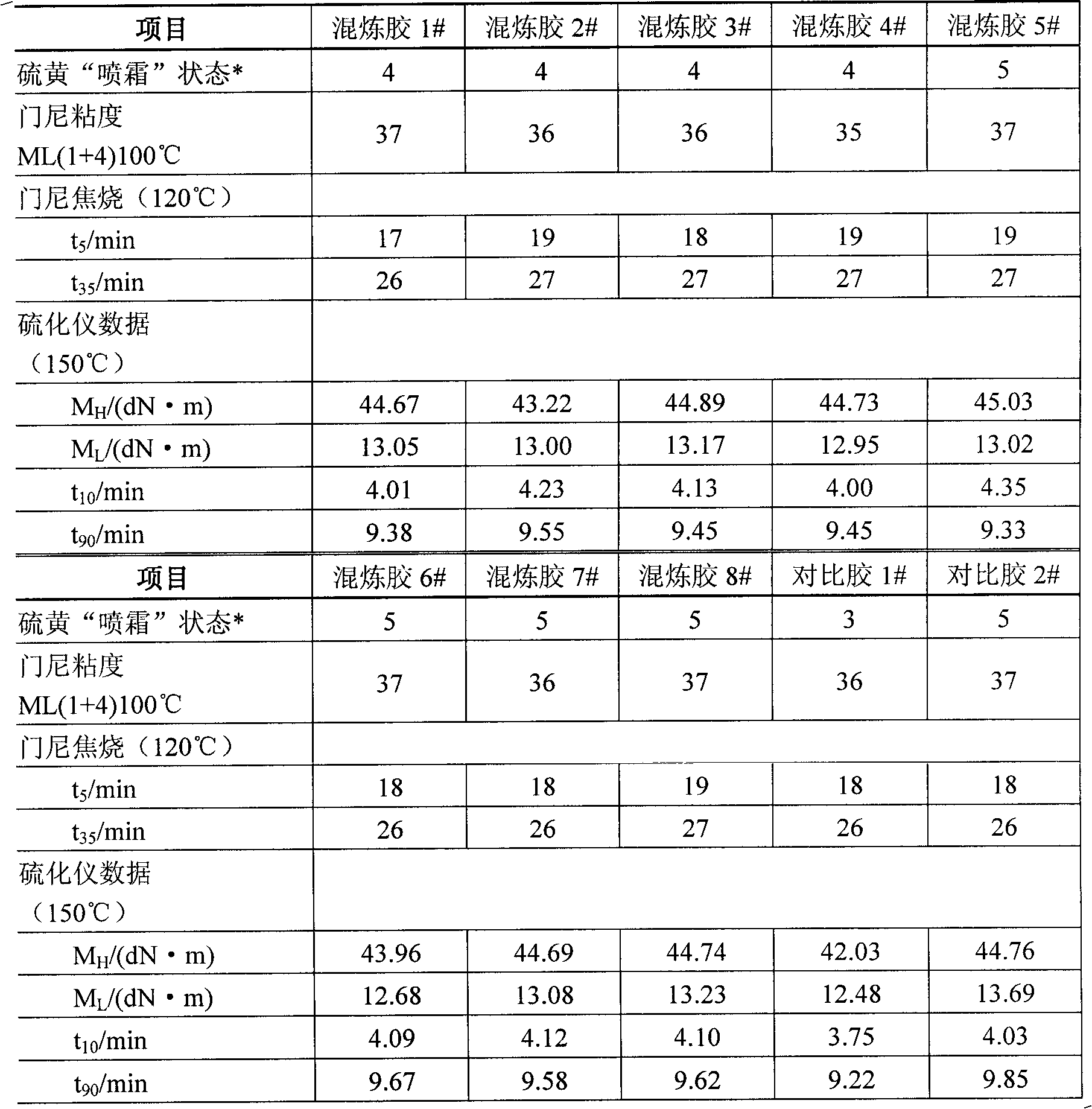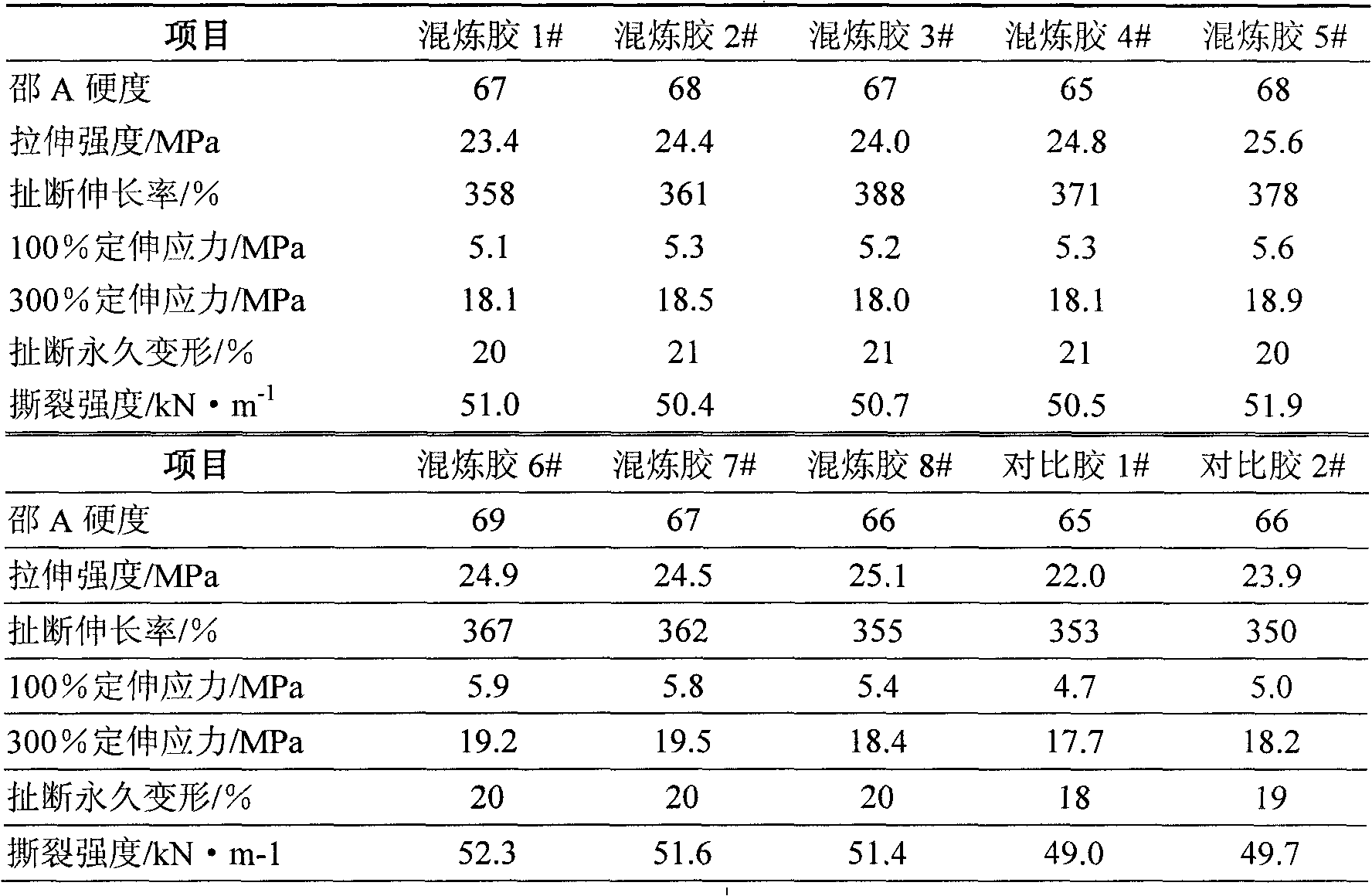Microencapsulated rubber accessory ingredient
A technology of rubber additives and microcapsules, which is applied in the field of encapsulated rubber additives coated with microcapsules and its preparation, which can solve problems such as uncontrollable heating, poor test repeatability, and difficult control of reaction conditions.
- Summary
- Abstract
- Description
- Claims
- Application Information
AI Technical Summary
Problems solved by technology
Method used
Image
Examples
Embodiment 1
[0072] Embodiment 1 single-layer polyurethane IPN microcapsule sulfur
[0073] 20.00 g of polyoxypropylene diol (DL-400) and 14.49 g of toluene diisocyanate (TDI) were added to a four-neck reaction flask, and 2.00 mL of methyl ethyl ketone and 0.5 μL of catalyst dibutyltin dilaurate (T-12) were added. Raise the temperature to 80°C and react for 90 minutes. 1.10mL of triethylamine and 2.00mL of deionized water were dropped into the reaction solution, continued to stir vigorously for 20min, and left to stand to obtain a water-based polyurethane (WPU) prepolymer emulsion.
[0074] Add 3.15g WPU prepolymer emulsion, 3.85g butyl acrylate, 3.00g styrene, 0.5g emulsifier octylphenol ethoxylate (OP-10), 50g sulfur powder and 0.3g potassium persulfate to the reaction bottle , stirring rapidly at a stirring speed of 800r / min to fully disperse it in 480mL of water, raise the temperature to 70°C, and react for 120min. After washing with water, filtering and drying, microcapsule-coated s...
Embodiment 2
[0075] Embodiment 2 single-layer polyurethane IPN microcapsule sulfur
[0076] The preparation of WPU prepolymer emulsion is as in Example 1.
[0077] Add 3.15g WPU prepolymer emulsion, 3.85g epoxy resin E-44 (Baling petrochemical products), 3.00g styrene, 0.5g emulsifier sodium dodecyl sulfate (SDS), 50g sulfur powder in the reaction bottle and 0.3g of potassium persulfate, stirred rapidly at a stirring speed of 800r / min to fully disperse it in 480mL of water, heated to 70°C, and reacted for 120min. Washed with water, filtered, and dried to obtain microcapsule-coated sulfur 2#. Tested by the same method, the yield of the microcapsule sulfur was 94.3%, the coating rate was 75.7%, and the particle size of the microcapsule was 20 μm.
Embodiment 3
[0078] Embodiment 3 single-layer polyurethane IPN microcapsule sulfur
[0079] The preparation of WPU prepolymer emulsion is as in Example 1.
[0080] Add 3.15g WPU prepolymer emulsion, 6.85g styrene, 0.5g emulsifier octylphenol polyoxyethylene ether (OP-10), 50g sulfur powder and 0.3g potassium persulfate to the reaction bottle, and stir at 800r / min Stir at a high speed to fully disperse it in 480mL of water, raise the temperature to 70°C, and react for 120min. Washed with water, filtered, and dried to obtain microcapsule-coated sulfur 5#. Tested by the same method, the yield of the microcapsule sulfur was 92.5%, the coating rate was 70.7%, and the particle size of the microcapsule was 20 μm.
PUM
| Property | Measurement | Unit |
|---|---|---|
| diameter | aaaaa | aaaaa |
| diameter | aaaaa | aaaaa |
| diameter | aaaaa | aaaaa |
Abstract
Description
Claims
Application Information
 Login to View More
Login to View More - R&D
- Intellectual Property
- Life Sciences
- Materials
- Tech Scout
- Unparalleled Data Quality
- Higher Quality Content
- 60% Fewer Hallucinations
Browse by: Latest US Patents, China's latest patents, Technical Efficacy Thesaurus, Application Domain, Technology Topic, Popular Technical Reports.
© 2025 PatSnap. All rights reserved.Legal|Privacy policy|Modern Slavery Act Transparency Statement|Sitemap|About US| Contact US: help@patsnap.com


